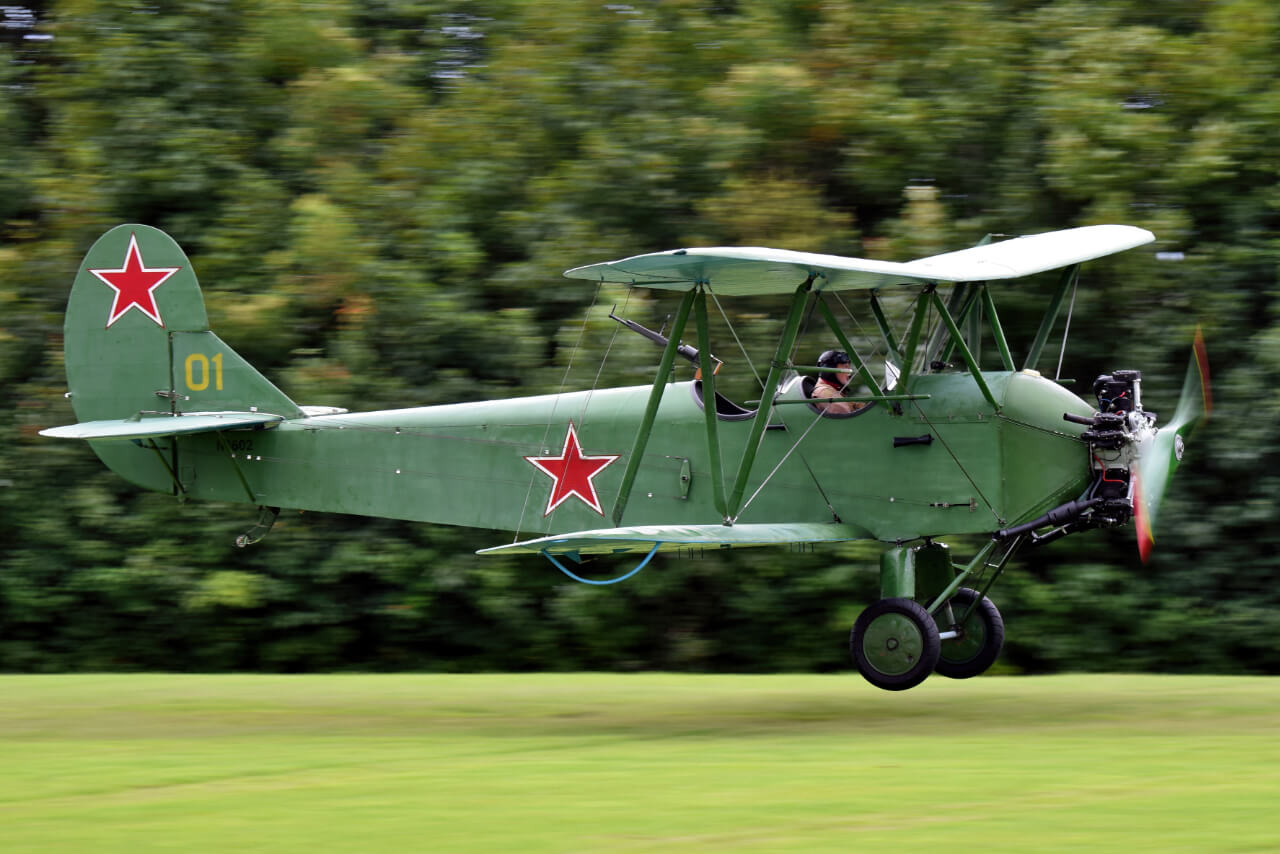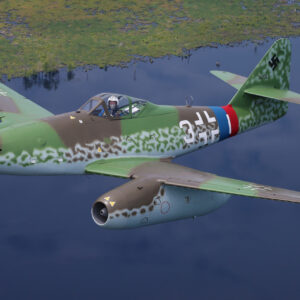
Military Aircraft Naming Conventions:
With the Museum’s Mitsubishi A6M3 Model 32 Zero approaching its first post-restoration flight, we thought it might be interesting to cover some of the history surrounding the design. Part of this includes describing how the aircraft gained its name and what its designation means. There is actually a lot of meaningful information hidden within the seeming simplicity of its handle. Before we dig into those details, however, it might be useful to place them in context with what other nations were doing at the time.
Every military air arm has its own specific convention for identifying the aircraft it operates - and often those flown by its adversaries too. For instance, Britain’s Royal Air Force (RAF) labelled its aircraft types with a proper name, like Spitfire, while adding a ‘Mark’ number (e.g. Mk.IXe) to differentiate each variant of the breed. Other WWII combatants, such as Germany’s Luftwaffe, simply used an abbreviation for the manufacturer or chief designer’s name, followed by a unique number (e.g. Messerschmitt Me 262). The U.S. Army Air Corps, like the Luftwaffe, also used a simple alphanumeric designator for its aircraft, but chose a mission identifier prefix instead of a manufacturer’s abbreviation: ‘P’ for Pursuit, ‘C’ for Cargo, ‘B’ for Bomber, etc. They later adapted their protocol to include nicknames, much like the British, to make it easier for aircrew and maintainers to memorize or communicate a type’s identity - Warhawk being easier to remember or differentiate in a radio message than P-40, for example.

US Navy & Marine Corps Aircraft Names:
The U.S. Navy (between 1922 and 1962) employed a far more esoteric, yet information-rich method of designating aircraft types, however. Take the F4U-1D Corsair, for example. The “F” in this descriptor identifies the aircraft as a “Fighter” whilst the “U” refers to its manufacturer, Vought. The “4” indicates that the F4U is Vought’s fourth naval fighter design, while “-1D” means that this Corsair is the fourth sub-variant (D) of the type’s first version (-1). Goodyear Aircraft also produced numerous examples of this same Corsair variant during WWII, but the two factories had subtle manufacturing differences, meaning that parts from one constructor might not fit a seemingly identical aircraft built by the other. This is why the U.S. Navy applied a different designator (FG-1D) for Goodyear-built versions of the F4U-1D. In this case, “FG” implied that the aircraft was Goodyear's first naval fighter design.

The Douglas SBD:
The Museum’s SBD-5 Dauntless is another example of the U.S. Navy’s peculiar nomenclature: S = Scout, B = Bomber, D = Douglas Aircraft, 5 = fifth model. This was Douglas Aircraft’s first Scout Bomber design - hence the simple “SB” without an intermediary digit. Perhaps appearing overly complex to outsiders, these designations were incredibly helpful to U.S. Navy and Marine Corps war planners, pilots and maintenance personnel alike, as they described every relevant detail of the equipment at hand with succinct efficiency.

The North American SNJ Texan:
While the SBD and F4U have relatively logical naming conventions, this did not hold true for all U.S. Navy aircraft; the Museum’s North American Aviation SNJ-2 Texan trainer being one such example. For the latter case: S = Scout and N = Trainer, while J = North American Aviation (NAA). The Texan’s designator reveals a clear limitation to the Navy’s system. With only 26 letters in the English alphabet, it is little surprise that some aircraft would receive identifying letters bearing little or no relation to word(s) they represented. For instance, with respect to the aircraft’s mission, T was already in use for Torpedo bomber types, such as the Douglas TBD Devastator. As a result, the Navy’s Bureau of Aeronautics selected N to represent Trainer. Similarly, when it came to the Texan’s manufacturer, the letters “N” and “A” were already in use; “N” belonging to the U.S. Navy’s own Naval Aircraft Factory and “A” to the Brewster Aeronautical Corporation, which had employed the letter since 1934, two years before NAA sold its first design, the NJ-1, to the Navy. Precisely why NAA received the letter-code J is unclear, but its availability at the time of introduction is the most likely governing factor. Given the limited number of letters available, however, the Navy did end up re-using the same letter for different manufacturers - but usually only when the earlier manufacturer became defunct, rebranded or a merger changed its name. [Note: In September, 1962, all branches of the U.S. military unified their naming structures, essentially adopting the method which the U.S. Air Force already had in place - a system which continues to this day.]


The Mitsubishi A6M ‘Zero’:
The Imperial Japanese Navy’s aircraft naming methodology closely mimicked the U.S. Navy’s system, albeit with subtle differences. The English-language nomenclature for the museum’s specific aircraft refers to it as an A6M3 Type 0 Model 32. Here the “A” identifies the aircraft as a “Shipboard Fighter” whilst the “M” is shorthand for the manufacturer, Mitsubishi. The “6” indicates the aircraft is Mitsubishi’s 6th naval fighter design, with the “3” defining it as the third major variant of the breed. The designation “Type 0” is how the world came to know this aircraft as the “Zero”. Oddly enough, the “0” (more properly “00”) actually references the last two digits of the calendar year in which the aircraft entered military service - the year 2600 in Japan, but 1940 for those cultures using the Gregorian Calendar (like most Western nations). The Japanese themselves often referred to the A6M simply as the Reisen, a truncated combination of the words Rei (Zero) and Sentoki (Fighter).

Model 32:
Digging further, the aircraft’s designation as a Model “32” should more properly be thought of as two separate numbers, three and two. Here, the first digit refers to the basic wing design which the variant employed, whilst the second digit speaks to the engine choice. The Model 32, therefore, employed the Zero’s third major wing design and its second engine option, the Nakajima Sakae NK1 Model 21 (Sakae meaning “Glory”). Probably for ease of manufacture, this new wing design deleted the rounded, folding wing tips of the earlier A6M2 Model 21, giving it a clipped wing appearance, while reducing the wing span from 39’ 4-7/16” to 36’ 2-1/4” for roughly the same wing area.
Zeke, Hap & Hamp:
As most readers will be well aware, the Allies gave each Japanese aircraft design a specific code word to simplify the task of identifying them in both combat and combat reports. U.S. Army Captain Frank T. McCoy Jr. of the Technical Air Intelligence Unit (TAIU) is credited with the concept, which soon took off after its introduction in July, 1942. Being from Tennessee, McCoy came up with distinctive names popular in Appalachian culture at the time. Single-engine fighters typically received male-sounding nicknames, with the Zero identified as Zeke. Interestingly, when Allied pilots first encountered the A6M3 Model 32 in combat during mid-1942, the variant’s squared-off wingtips and slightly enhanced dogfighting performance convinced them that they were facing a brand new fighter design. Some even wondered whether the aircraft was a Japanese variant of Germany’s Messerschmitt Me 109E which, superficially at least, had similarly shaped wingtips. Since Japan and Germany did enjoy a level of technology transfer during WWII, the idea that Japan could field a ‘109 was not beyond reason. This is why the TAIU assigned the A6M3 Model 32 a new nickname: Hap. Apparently, this name did not sit too well with the legendary Commanding General of the U.S. Army Air Forces at the time, Lt.Gen. Henry Hap Arnold, so TAIU changed the new Zero's designator to Hamp. But even the name Hamp did not last that long.


Following their acquisition of several relatively intact Zero Model 32s at an airstrip in Buna, New Guinea during December 1942, the TAIU quickly realized their mistake in identifying the A6M3 Model 32 as a new type. Thereafter the variant became known simply as the Zeke 32. Subsequent Zero models reverted to the more familiar Zeke.
The TAIU, a joint operation involving the Royal Australian Air Force, the U.S. Navy and Army Air Forces was based at Eagle Farm, a suburb of Brisbane, Australia. Their primary function was to obtain and evaluate Japanese warplanes to enable Allied forces to more effectively engage them. Their role in rebuilding and testing an A6M3 Model 32 is interesting, and one we shall expand upon a little in a future article.

Codename Legacy:
Interestingly, while not employed over Europe during WWII, the Allied penchant for nicknaming an adversary’s aircraft (and other combat equipment) persists to the present day within NATO, which has specific codenames for various kinds of Soviet State/Russian or Chinese military hardware. Of course, some Soviet WWII aircraft types were still in service following NATO's founding in April 1949, so they too received specific reporting names. The Museum's Polikarpov Po-2, for instance, became known as the Mule to NATO forces.



